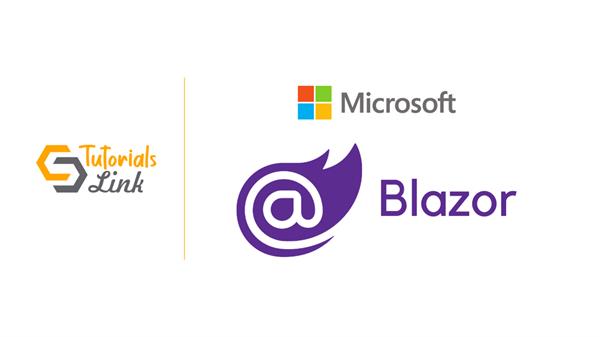Mobile Blazor Bindings: Bringing Blazor Apps to Your Users' Fingertips
For web developers, Blazor has been a game-changer. It allows building dynamic web UIs using C# and familiar web technologies like HTML, CSS, and Razor syntax. But what if you could leverage those same skills to create native and hybrid mobile applications? Enter Mobile Blazor Bindings, an experimental project from Microsoft that unlocks exciting possibilities for Blazor in the mobile realm.
What are Mobile Blazor Bindings?
Mobile Blazor Bindings is an evolving framework that empowers developers to build cross-platform mobile apps using C# and .NET. It bridges the gap between web and mobile development by enabling you to define UI components and application behaviour using the Blazor programming model and Razor syntax. Here's the key:
- Native Look and Feel: Mobile Blazor Bindings integrates seamlessly with Xamarin.Forms, a popular framework for building native mobile apps with .NET. This means you can leverage native UI controls for Android, iOS, Windows, macOS, and Tizen, ensuring your app delivers a platform-specific user experience.
- Familiar Blazor Development: The beauty lies in using the Blazor development experience you already know. You write C# code alongside UI markup using Razor syntax, similar to how you would build a Blazor web application. This reduces the learning curve for web developers venturing into mobile app development.
- Hybrid App Option: Mobile Blazor Bindings also supports hybrid mobile app development. This allows you to embed Blazor web UI components, built with HTML, directly within your native app. This approach offers more flexibility in UI design while maintaining the benefits of native performance.
Benefits of Mobile Blazor Bindings
- Leverage Existing Skills: Web developers with Blazor experience can easily transition to mobile app development with minimal additional learning.
- Cross-Platform Development: Build apps for multiple platforms (Android, iOS, etc.) with a single codebase, reducing development time and maintenance costs.
- Native Performance: Native UI controls ensure a smooth and responsive user experience on each targeted platform.
- Reduced Codebase: Share application logic (C#) across web and mobile versions, promoting code reuse and consistency.
- Improved Developer Productivity: The familiar Blazor development experience can streamline development and reduce boilerplate code.
Getting Started with Mobile Blazor Bindings
Mobile Blazor Bindings is still under development, but Microsoft provides excellent resources to get you started. Here's a quick overview:
- Prerequisites: Ensure you have .NET 6 or later installed along with the necessary mobile development tools (e.g., Android SDK, Xcode) for your target platforms.
- Project Setup: Use the .NET CLI to create a new Mobile Blazor Bindings project. This creates separate project structures for the Blazor app (using .NET Standard 2.0) and the native mobile app (using Xamarin.Forms).
- UI Development: Define your app's UI using Razor components with Xamarin.Forms controls. You can leverage existing Xamarin.Forms UI components and Blazor features like data binding and event handling.
- Hybrid Apps: For hybrid apps, create separate HTML files for the Blazor web UI elements and integrate them within your Xamarin.Forms layout. Mobile Blazor Bindings handles communication between the native and web parts of the app.
- Deployment: Build and deploy your app to targeted mobile platforms using the respective tools (e.g., Visual Studio, Xamarin tools).
Coding Example: A Simple Counter App
Let's build a basic counter app to illustrate Mobile Blazor Bindings in action. Here's a simplified example with both native and hybrid approaches:
Native Approach (Counter.razor):
@using Xamarin.Forms
<Button Clicked="@IncrementCount">Click me</Button>
<Label Text="Current count: @count" />
@code {
int count = 0;
void IncrementCount()
{
count++;
}
}
Hybrid Approach (counter.html):
<h1>Counter</h1>
<button onclick="incrementCount()">Click me</button>
<p>Current count: <span id="count">0</span></p>
<script>
function incrementCount() {
document.getElementById('count').innerText++;
}
</script>Going Further with Mobile Blazor Bindings
The provided example offers a glimpse into Mobile Blazor Bindings' potential. Here's how you can delve deeper:
-
Data Binding and State Management: Mobile Blazor Bindings supports data binding between UI components and C# code, similar to Blazor WebAssembly. You can leverage libraries like MudBlazor or Radzen. Blazor simplifies state management and complex UI interactions in your mobile apps.
-
Interacting with Native Features: Mobile Blazor Bindings allows you to access native device functionalities through platform-specific APIs exposed by Xamarin.Forms. This enables features like geolocation, camera access, or integration with device sensors in your mobile apps.
-
Advanced UI Components: While Xamarin.Forms offer a rich set of UI controls, you can also create custom Blazor components using C# and Razor syntax. This allows for building reusable UI elements with complex behaviour and styling specific to your app's needs.
Considerations and Future Outlook
Mobile Blazor Bindings is an exciting project that opens doors for web developers to create mobile apps. However, it's essential to consider some factors:
-
Experimental Stage: As an experimental project, Mobile Blazor Bindings is still under development. The feature set and tooling might evolve, so staying updated with Microsoft's announcements is crucial.
-
Performance Optimization: While Xamarin.Forms ensure native performance for UI controls, extensive use of Blazor web UI components within hybrid apps might require optimization for a seamless user experience.
-
Native Development Expertise: For advanced native functionalities or platform-specific customizations, some understanding of native development tools and APIs might be beneficial.
Despite these considerations, Mobile Blazor Bindings holds immense potential for the future of mobile app development. With ongoing development and community support, it could become a powerful tool for building cross-platform mobile apps using familiar C# and .NET skills.
Conclusion
Mobile Blazor Bindings bridges the gap between web and mobile development, empowering web developers to leverage their Blazor expertise to create native and hybrid mobile applications. With its familiar development experience, cross-platform capabilities, and potential for code reuse, Mobile Blazor Bindings offers an exciting path for the future of mobile app development using C# and .NET. As the project matures, it will be interesting to see how developers embrace this technology and create innovative mobile experiences.





